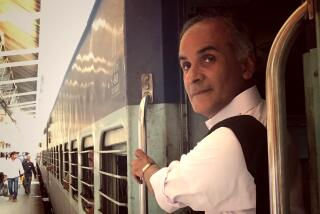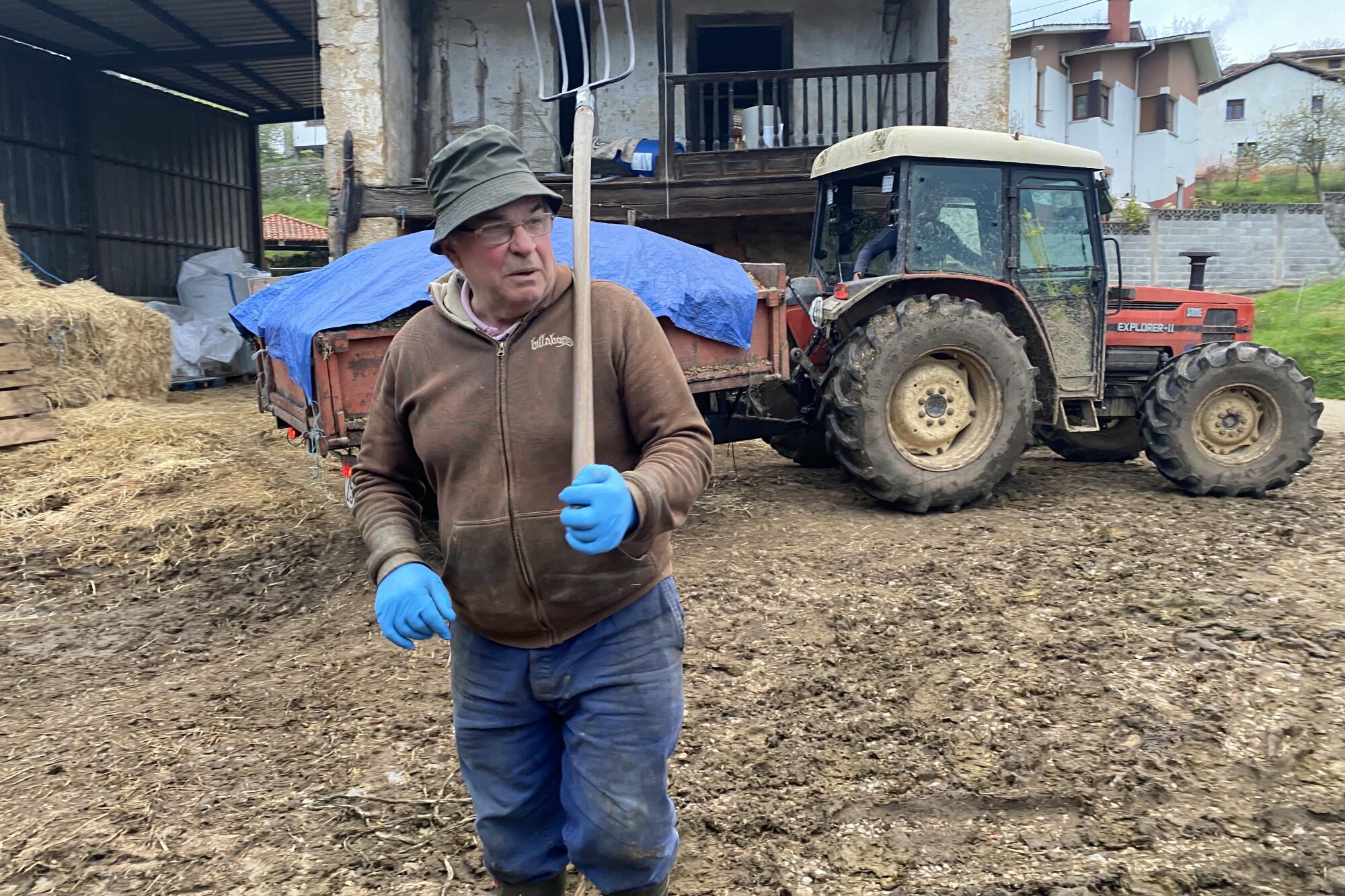
It’s a perilous reawakening.
For billions of people across the globe, the onset of the coronavirus pandemic brought weeks of stringent lockdowns and stay-at-home orders. Now that those measures are easing, many find themselves in a strange netherworld — life as it was has been transformed and transmuted, but the parameters of daily existence going forward are not yet clear.
And with disorienting speed, it could all change yet again.
With nearly a quarter-million dead worldwide, and known infections surpassing 3 million, the burials go on; there is no vaccine.
But in country after country, the slow reclamation of public spaces is a kind of alchemy, laced with questions about personal liberty and societal responsibility, the nature of casual encounters and deeper entwinement with loved ones and strangers alike. Wherever breath mingles, collective breath is held.
In all probability, there will be many, many more days of fine-tuning the most mundane actions, wondering what is safe and what is not, considering whether some offhand gesture could upend a life, or lives. France’s President Emmanuel Macron, preparing to ease a nationwide lockdown, warned compatriots in a May Day address that a partial reopening in 10 days’ time would “not be the passage to normal life.”
Here’s a look around the world at signs of — and hopes for — a return to familiar ways.
Mexico City
Music and memory
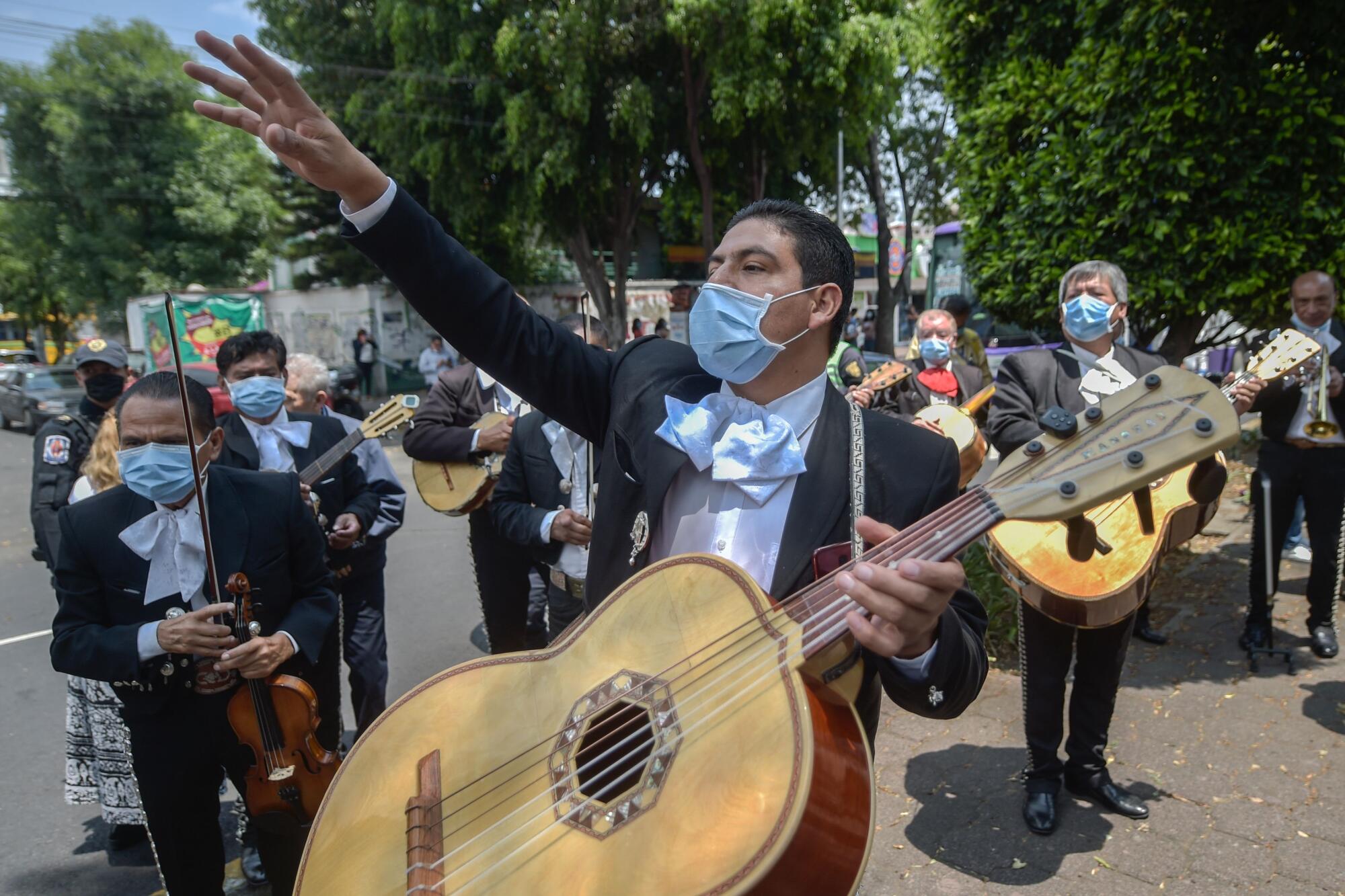
Plaza Garibaldi in downtown Mexico City is not supposed to be silent. For more than a century, the large public square has been the home of Mexican mariachi music.
On a typical night, it would be filled with dozens of bands playing bouncing tunes about love, lust and heartbreak. Spectators would be singing along as they downed beers at crowded sidewalk cafes. The cacophony of violins, trumpets and laughter might continue until dawn.
In these days of the coronavirus, the fiesta has halted.
Now only a few mariachis show up each day at the empty plaza. They are ready to perform, dressed in their handsome charro suits, but they have nobody to play for. The plaza’s bars and restaurants are closed; almost no one passes by.
For years, the musicians have made a living marking momentous occasions — birthdays, weddings, quinceañeras — but these days, such big gatherings are anathema.
Even the statues commemorating famous mariachis look lonely. A sculpture of Juan Gabriel, one of the nation’s most beloved crooners of romantic ballads, has been adorned with a surgical mask.
Daniel Muñoz, 60, has lived his entire life in an apartment on the plaza, where he owns a now-shuttered restaurant called La Símpatía. On a recent afternoon, he stood looking out at the plaza as a hungry tomcat, deprived of the usual bounty from eating establishments, sniffed at his feet.
Muñoz can’t wait until the plaza comes alive again, until he hears “Mexico Lindo y Querido” and “Las Mañanitas” echoing along with voices in the night air.
“It’s odd, I know,” he said. “But I really miss the noise.”
— Kate Linthicum
Tripoli, Lebanon
In a holy season, spice of life
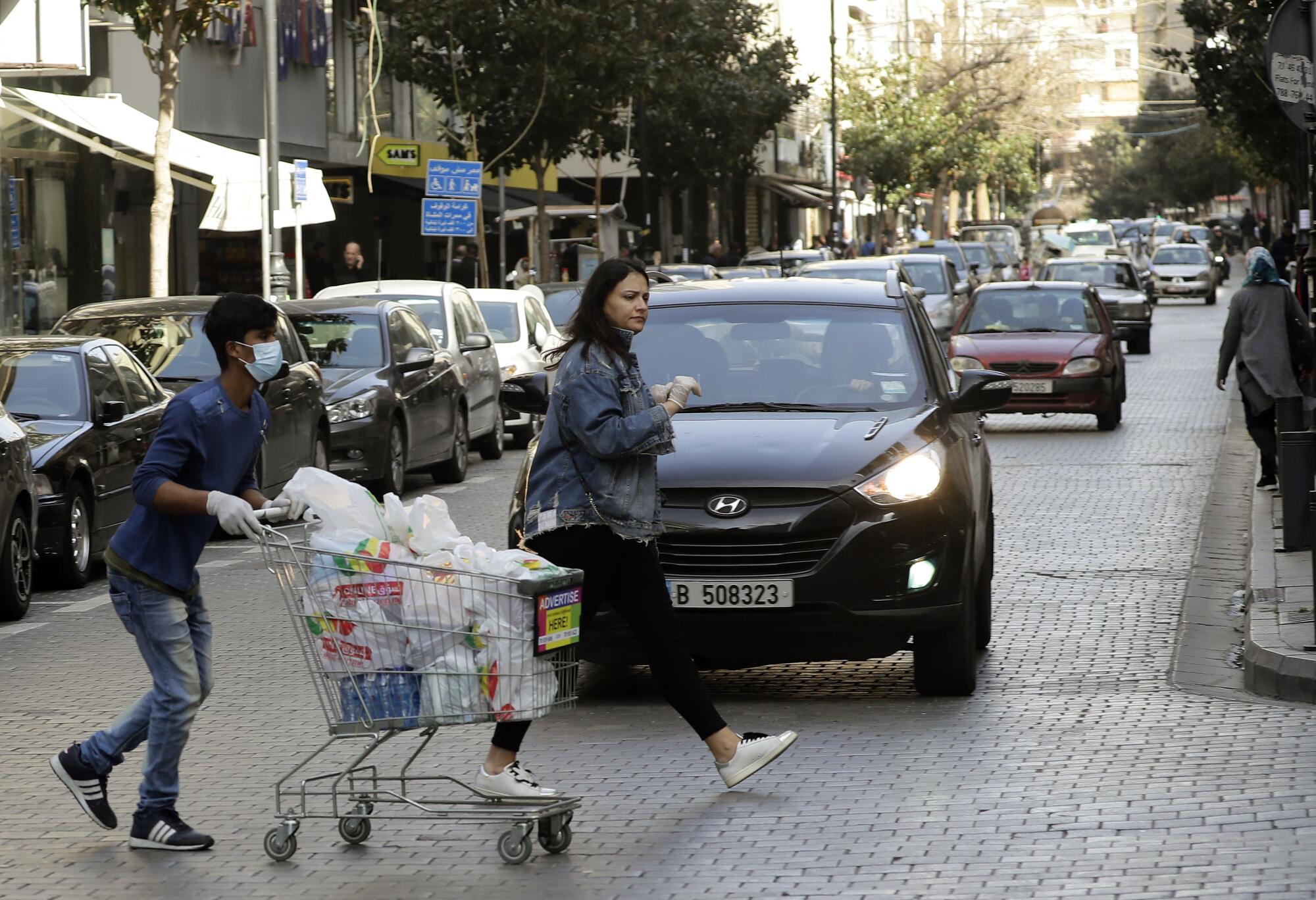
Souq al-Attareen, the old spice market in the Lebanese coastal city of Tripoli, is a carnival of commerce — even in these coronavirus-shadowed days.
On a recent day, merchants flung their store shutters open, ready to greet customers. Shoppers eager to stock up before iftar — the daily sunset breaking of the fast in the holy month of Ramadan — navigated a beehive of porters, scooters and the occasional pull-cart.
No one seemed concerned with the strictures of social distancing despite the clusters of uniformed security personnel keeping watch nearby.
“We’re ignoring all that at the moment. People need to work,” said Adel, a police officer lingering in the archway of a dairy shop selling braids of salty Majdouleh cheese and chunks of halloumi adorned with black sesame seeds.
In Tripoli, and across the Muslim world, food merchants typically do booming business during Ramadan as people prepare lavish end-of-day feasts for friends and family. The days leading up to Eid al-Fitr, the festival that celebrates the end of the holy month, normally spurs a shopping frenzy.
This year, though, many Lebanese customers are struggling to come up with the cash. Even before the coronavirus crisis hit, the country was weathering economic convulsions that sent the national currency, the pound, tumbling to a third of its value against the dollar.
That has pushed the ever-growing ranks of the poor to choose between observing self-isolation and a scramble for whatever work they can find.
Despite the Lebanese government being effectively bankrupt, it is widely credited with keeping the virus in check with shutdowns. Now, phased reopenings are underway.
The relaxed rules shorten evening curfews, ease vehicle restrictions and extend merchants’ hours at market hubs like Souq al-Attareen. But no one knows how long this lull will last.
“If something happens, we’ll have to close,” said Adel, who did not want his last name used so he could speak freely. “Already, there’s no joy in this Ramadan.”
— Nabih Bulos
Beijing
Hard-earned exercise, while exercising caution
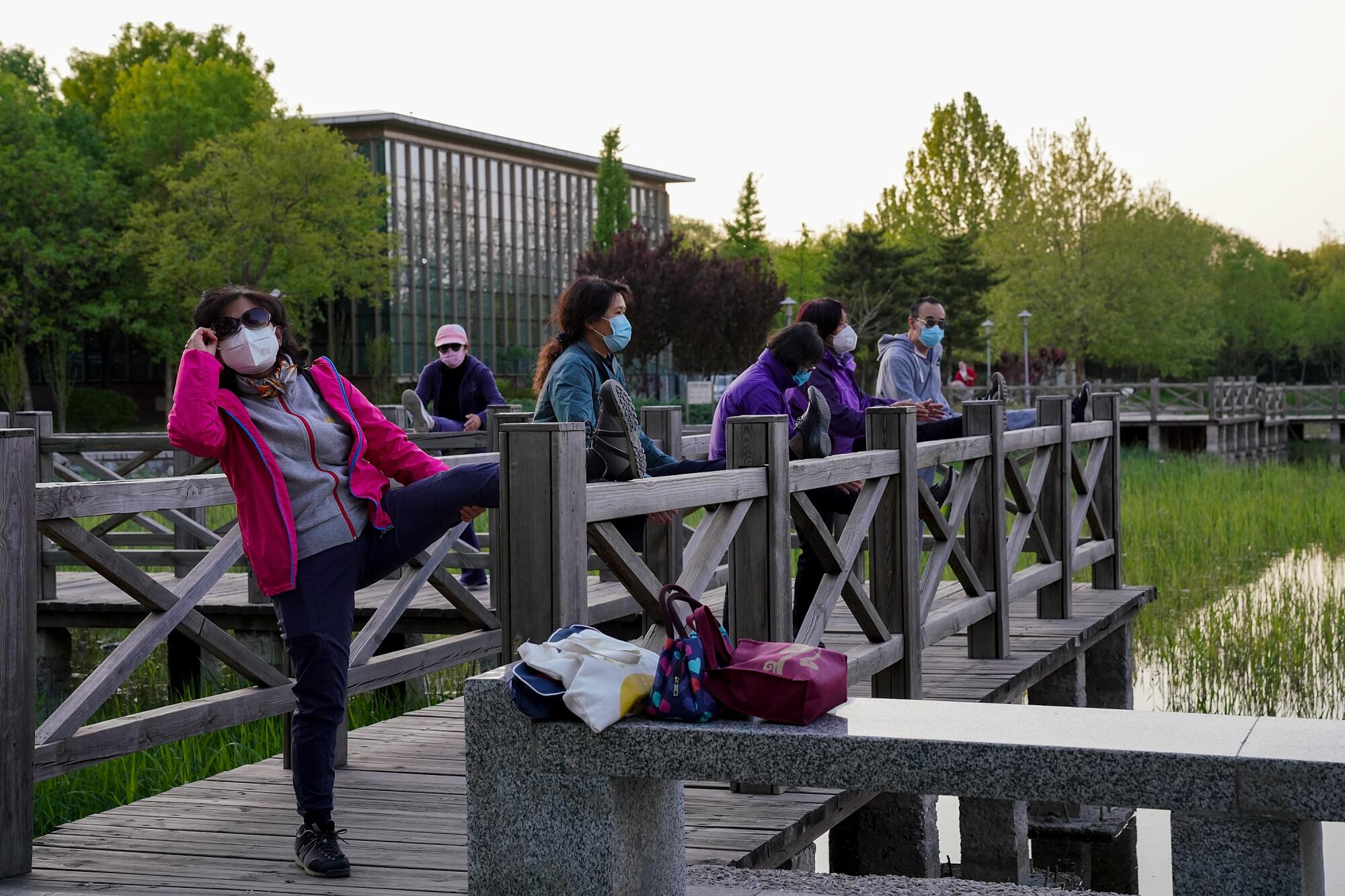
Drawing deep, deliberate breaths, elderly Chinese women practicing the meditative movements of tai chi glided their limbs slowly, as if the air were syrup. Huffing joggers made their way around the nearby running track.
The Workers’ Stadium, a large sports complex in eastern Beijing that had been closed since late January, is again open for morning exercise — a welcome change from the capital’s long shutdown regimen. But things are different than in pre-coronavirus days.
Everyone wears a mask and makes online reservations. A woman in goggles and gloves at the entrance makes note of each arrival’s name, phone number, identification and temperature.
Stadium users also have to display codes on their phones that are determined by key health metrics, including whether they had been previously quarantined at home and completed the mandatory 14 days of staying in or if they had traveled to any high-risk districts.
If the code is green, they can come in. If it’s yellow or red, they go to home isolation — or a hospital.
In a quiet corner of the stadium, one couple hit a badminton shuttlecock back and forth. They glanced around after a few minutes, then pulled off their masks — first the man, then the woman. Swinging their racquets high, they let the cool air whoosh around their uncovered faces.
Then a patrolling volunteer in a red Communist Party armband took note.
“Masks on!” she shouted. They quickly obeyed.
— Alice Su
Milan, Italy
Keys to revival

Three men made their way down Milan’s Via Manzoni, a wide stone boulevard whose high-end cafes and upscale retailers have been dark for the past seven weeks, with their masks fixed in place and a yard of space between them, as required by law.
They had chosen their number carefully, to avoid violating rules prohibiting public assembly as Italy continues to battle one of the world’s worst coronavirus outbreaks, with particular devastation here in the country’s north.
But the three carried a rattling, rustling message, in the form of about 2,000 keys — some actual metal ones, some oversized cardboard cutouts, some printed-out photos — symbolizing shuttered businesses and by extension the many affected by the shutdowns who could not march alongside them.
As the men approached the famed La Scala opera house, they turned left and stopped in front of Milan’s city hall. There, they would hand over the symbolic keys to the city’s bars and restaurants, barbershops and beauty salons — a reminder of stricken businesses that might never reopen if forced to remain closed much longer.
“I always say my restaurant survived World War II, and I just hope it can also survive coronavirus,” said organizer Alfredo Zini, 52, whose Ristorante Al Tronco, named for a tree trunk in its garden, first opened in 1933.
Milan’s protest was part of a nationwide demonstration Wednesday as Italy’s 300,000 eateries struggle to survive Europe’s longest-running lockdown, in effect since the second week in March. More than 50,000 are at risk of closing permanently, according to the Italian Federation of Public Merchants.
Many owners hoped they would be allowed to reopen on May 18, but the government said June 1 was the earliest possible date. Those extra weeks will result in another 9 billion euros in lost revenue industrywide, according to the federation.
Prime Minister Giuseppe Conte has said the country’s reopening must be gradual to keep the infection curve from bouncing upward again.
Zini said he didn’t want to open before it was safe, but that he was surprised the government still hadn’t issued guidelines. How far apart should tables be? How often must equipment be cleaned? What type of masks should servers wear?
The latter will be a difficult necessity, he said, because his workers are accustomed to showing off their smiles.
“For Italians, hospitality is our strong point,” Zini said. “People come here because they feel like they’re treated well.”
— Janna Brancolini
Singapore
Still orderly, but chafing
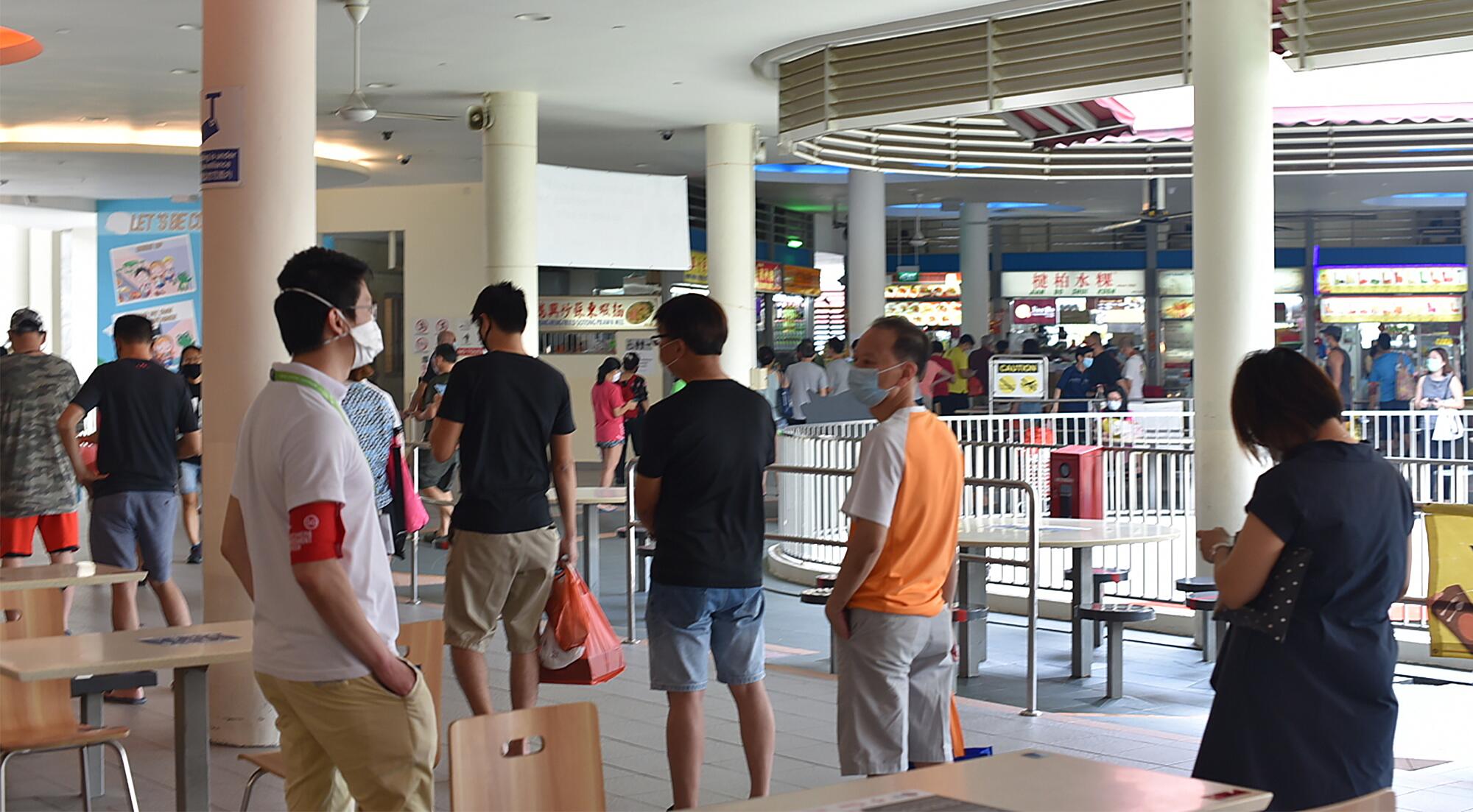
Singapore’s government doesn’t call it a lockdown. Rules that keep people from mixing in public, and perhaps spreading the coronavirus, are given a more coolly technocratic, perhaps euphemistic, term: “circuit breaker.”
But the city-state is still weeks away from ending restrictions, and the signs of strain are showing.
“Safe-distancing ambassadors” — workers enlisted to conduct surveillance checks of fellow residents — are deployed across the island nation to enforce rules about eating outdoors, wearing masks and loitering.
Thousands of people have been warned or cited for flouting the safety measures, and after numerous confrontations, the government had to issue yet another admonition, this one against threatening or abusing the ambassadors.
Methods for snitching on fellow residents abound. There’s a reporting tool embedded in a government app, and there are Facebook groups set up to post photos and videos designed to shame scofflaws, who are derided as “covidiots.”
Luckily, this food-obsessed nation is small enough for blanket coverage from meal-delivery apps, which have kept many of Singapore’s most beloved restaurants and food stalls open.
But expanded restrictions resulted in the closure of bubble tea stands, purveying popluar tea-based drinks with toppings like tapioca pearls.
That sparked anxious queues before the bubble-tea drought commenced, and Singaporeans were said to be buying up tapioca flour for homemade versions.
Affluent residents are almost as much of a Singapore hallmark as stifling heat and humidity, and as the lockdown has stretched on, those two signature traits have at times collided.
Communal swimming pools, public or private, are closed, but one British expatriate, barred from using his condominium pool, agreed to pay $20,000 for three months’ access to a private garden attached to a nearby Balinese-style mansion up for sale. The draw: It has a private pool.
“I was shocked,” said Lester Chen, a property agent at Singapore Realtors Inc., who negotiated the deal. The well-heeled client, he said, called swimming a necessity.
— David Pierson
Gijon, Spain
Seeing the sea, missing a grandmother

For more than 40 days, idyllic beaches fronting the northern Spanish city of Gijon — normally packed as springtime turns toward summer — were all but abandoned.
Officially, they’re still mainly closed to tourists and residents. But with a slight relaxing of restrictions, a few children, under their parents’ watchful eyes, can be seen at water’s edge, sometimes with dogs frolicking alongside.
Spain has suffered the world’s fourth-highest fatality toll in the coronavirus outbreak, behind only the United States, Italy and Britain. Since mid-March, the government has fought the infection’s spread with business shutdowns and stay-at-home orders.
These are days of slow reemergence. Patrols that previously monitored residents’ confinement indoors have now turned their attention to urging proper physical separation among those newly out in public.
In banks and shops, thick yellow lines on the floor mark prescribed distancing. Even a few days ago, nervous customers veered far away from one another in supermarket aisles; now they are still staying well apart, but venturing close enough to converse.
“There is still a very small influx of people,” said Jonatan Cadenas, manager of La Casa Real del Jamon, the Royal House of Ham. He used to showcase his prized jamon iberico in the open air, but now the cured ham is displayed behind glass and plastic barriers.
Life has changed in other ways, large and small. Masks and gloves, once found only in medical supply shops or pharmacies, are now a pandemic staple, to be found in regular markets.
Construction workers and operators of farming equipment are back on the job — though wearing masks, and with gloves slipped over work-callused hands. Rancher Ramon Moreno was annoyed but accepting.
“I can’t stand the mask or the gloves,” he said. “But it is what it is.”
This week, Johana Fernández, 41, took her two children — 10-year-old Nicolás and 8-year-old Manuela — for a first stroll on the beach since March 14, when stay-home orders began. Children under 14 are now allowed to come out for once-a-day walks.
Manuela said what she missed most wasn’t playing in the park or being with her friends, but visiting with her grandmother.
“I so want to see her,” she said.
— Claudia Núñez
More to Read
Sign up for Essential California
The most important California stories and recommendations in your inbox every morning.
You may occasionally receive promotional content from the Los Angeles Times.


